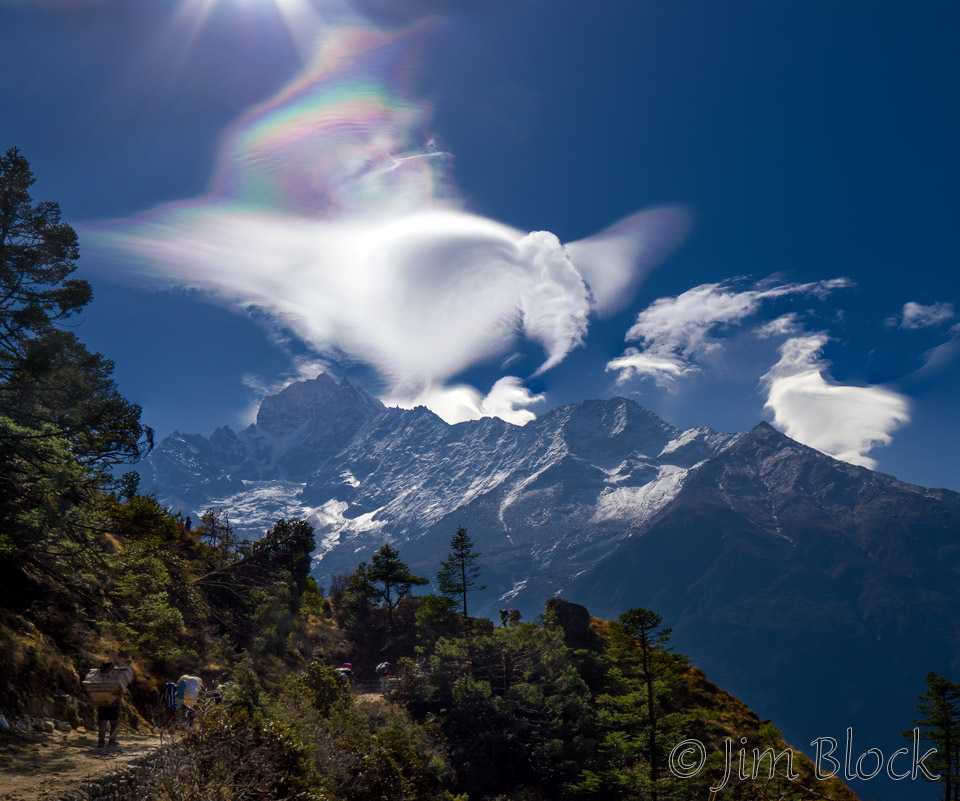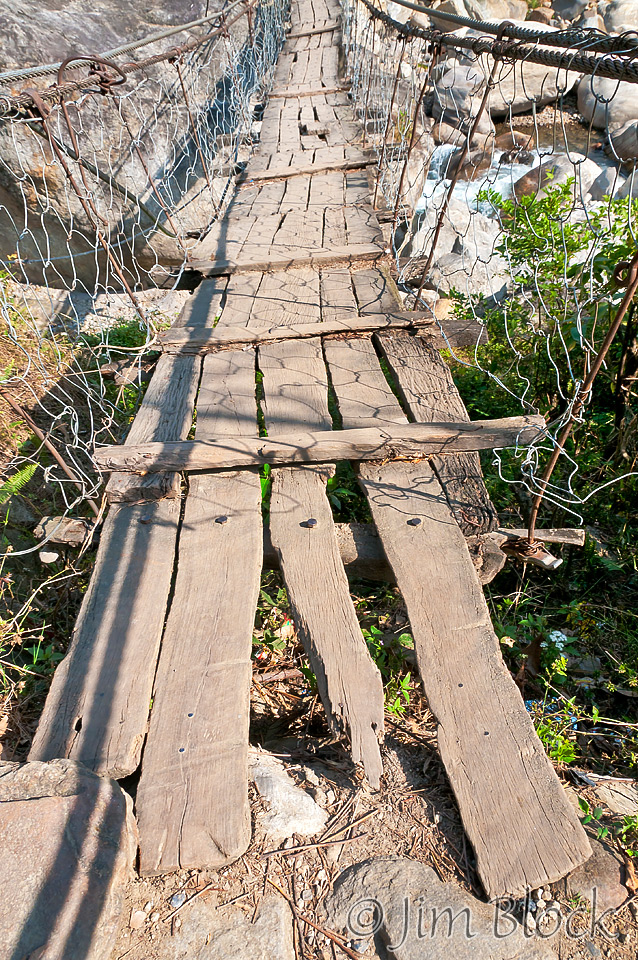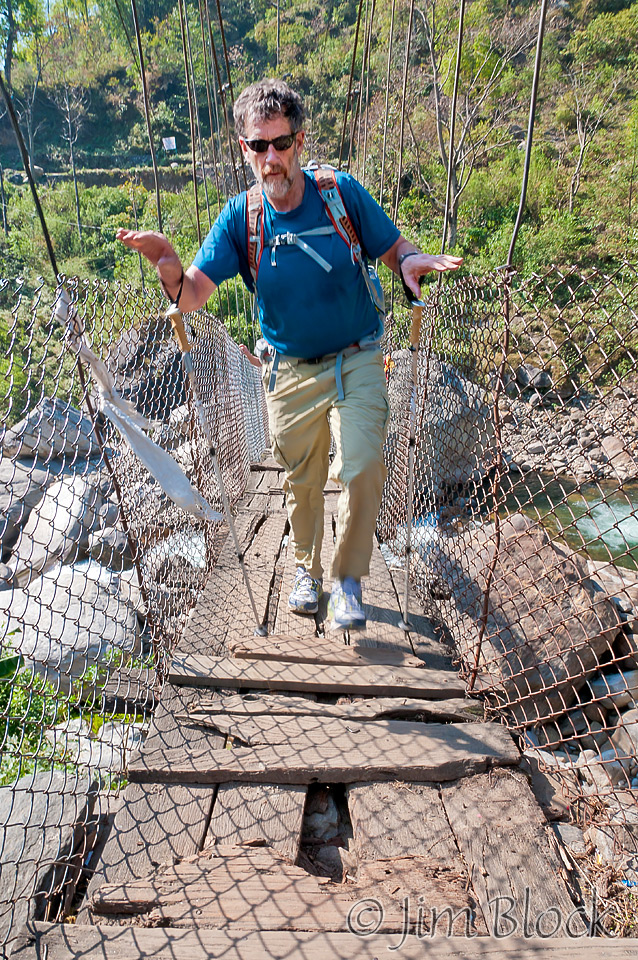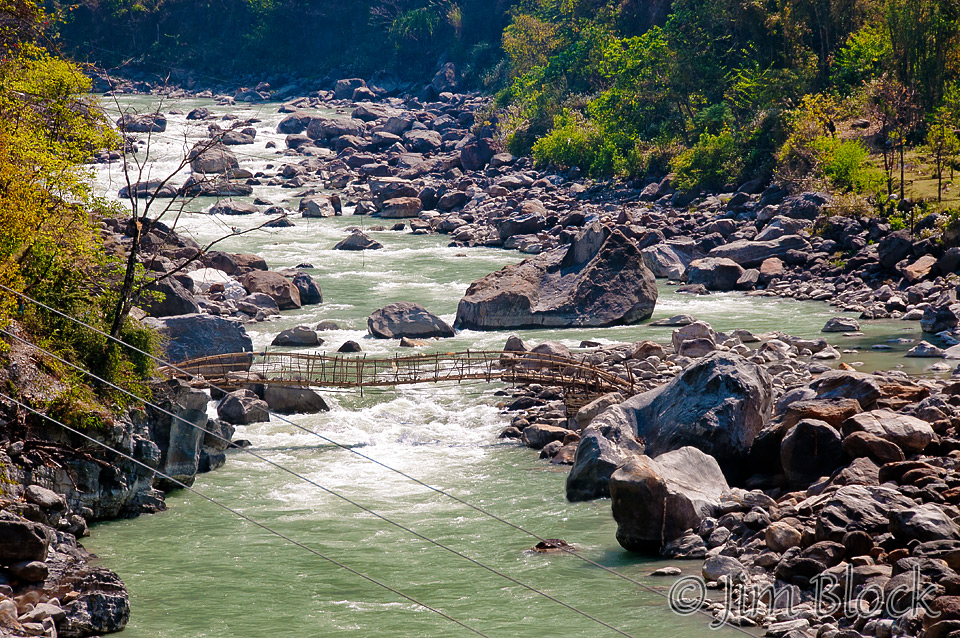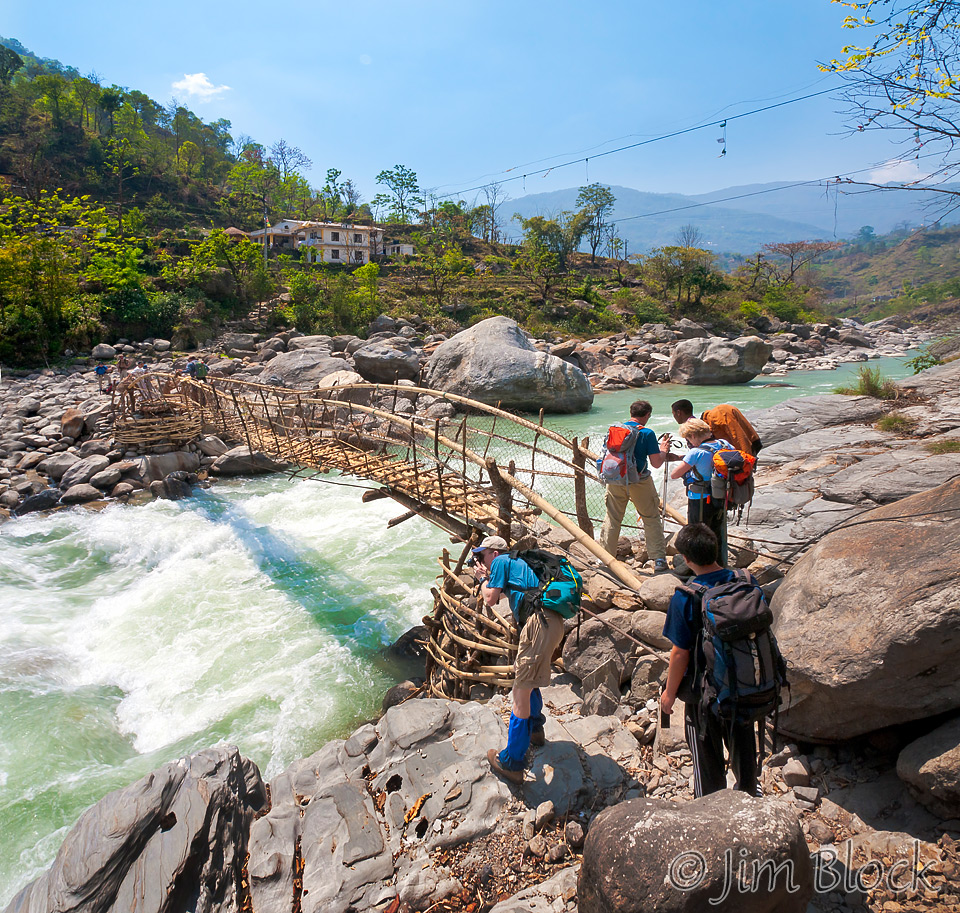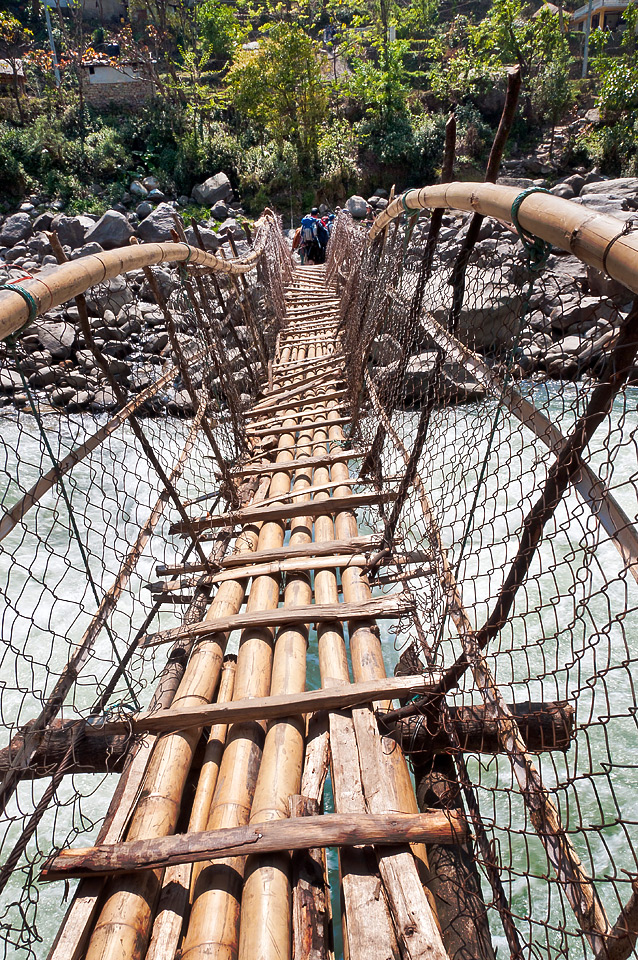Random Memories
Memories are so important. Here are some of my random memories from four great trips to Nepal. My wife, Jann, has an amazing memory for teacher’s names, where everything is in our house, and people she has met. I have a poor memory for faces and names of the many folks who have taken a photo class with me and for others I have met along the way. But I have an excellent memory for anything, anyplace, or any person I have photographed.
The first is a simple door and stairs I photographed on my first trip. It is at the “monkey temple” as all the rickshaw drivers call it. Formally the Swayambhu, an ancient religious complex atop a hill in the Kathmandu Valley, west of Kathmandu city. It is probably the most sacred among Buddhist pilgrimage sites. For Tibetans and followers of Tibetan Buddhism, it is second only to Boudhanath. I returned to Swayambhu with Carolyn my fourth trip, and somehow this spot did not seem the same. The magic was gone.
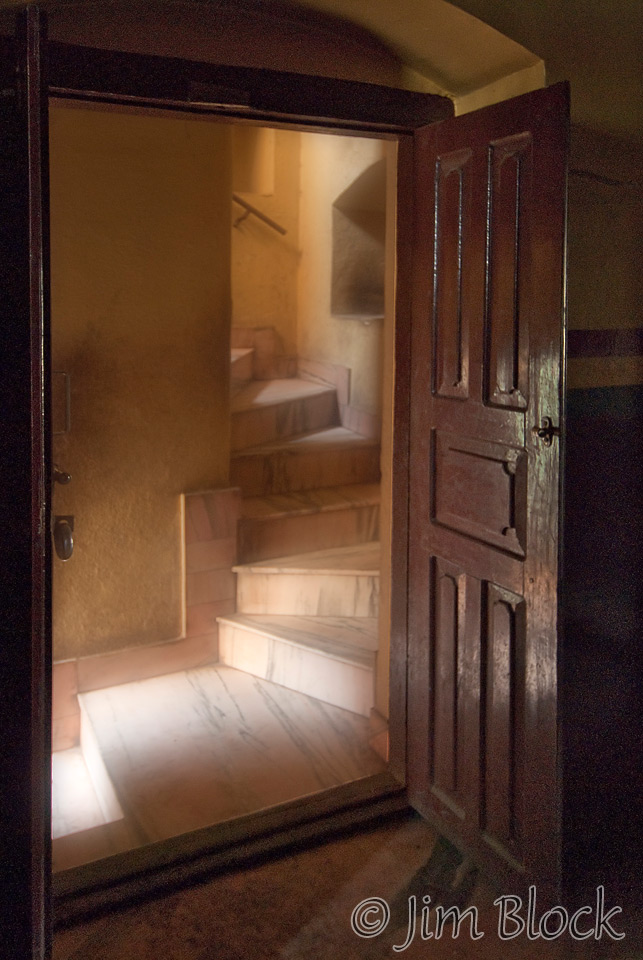
I have visited Boudhanath on all four of my trips to Nepal. I think the first time was the best. The Boudha Stupa there is huge and dramatic. People are constantly in motion walking clockwise around it. I first met Khari Rinpoche there when we had lunch in an second-floor restaurant overlooking the stupa.
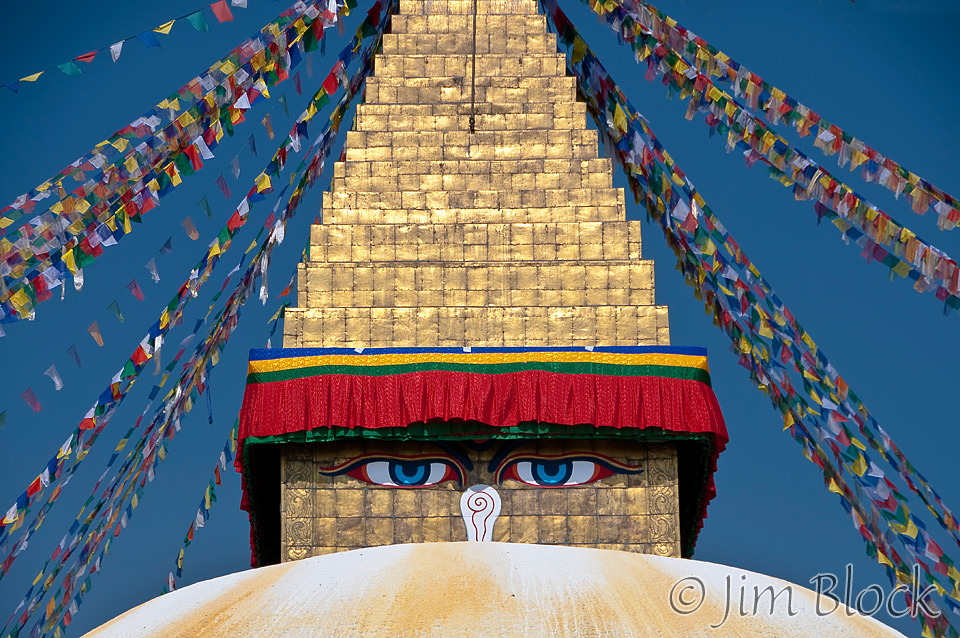
We visited four religious sites during my first full day in Nepal. The third was Budhanikantha, a Hindu open air temple that features the largest stone carving in Nepal. But I most remember this scene and pair of photos that I have used ever since in my photo classes. The slippers and feet tell a story that a straight photo does not seem to quite capture.
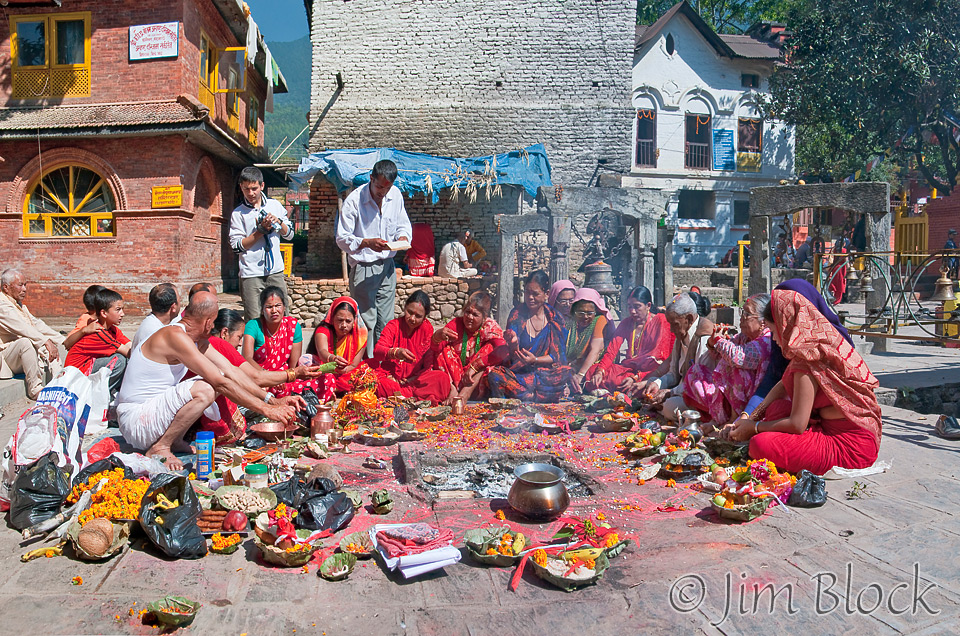
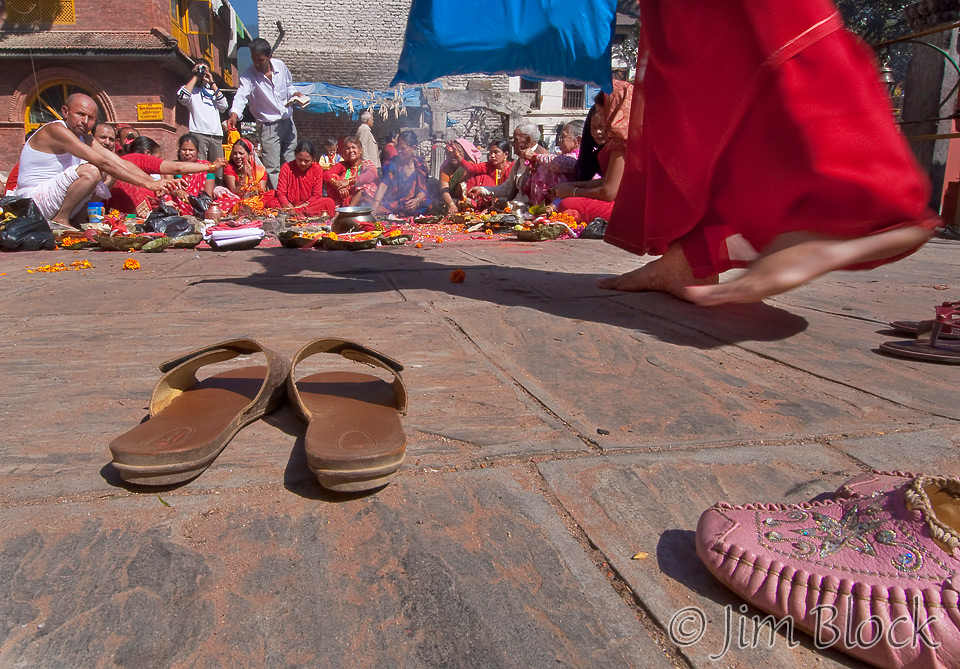
We visited porter Alawa Sherpa‘s home and the prayer hall he built for the village and met his family. Then we descended through the beautiful millet fields of Jubhing. On the way down I took a short detour when I saw a woman with a group of children near the edge of a cliff. I photographed her and showed her the photo on my monitor. I doubt that she had ever seen a photo of herself before. I believe not all of these children are hers. The nose jewelry indicates she is a Rai rather than a Sherpa.
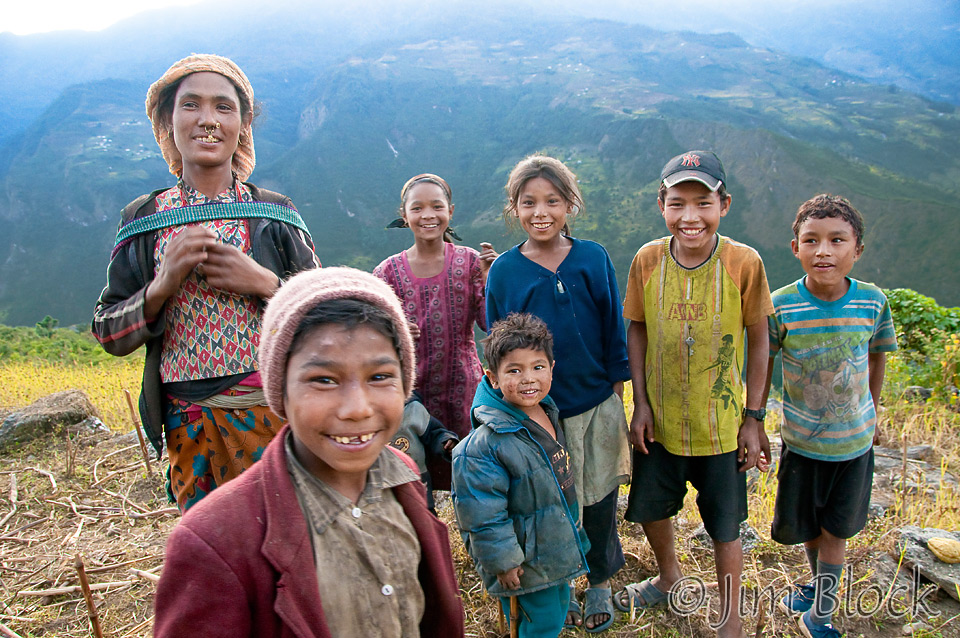
Shortly after taking the photo above, I photographed a home that I labeled “Marigold House” on the large print I made. I commented to Chhongba that the people living in this beautiful area must be wealthy. He said, no, the wealthy people have moved to Kathmandu, mostly these are old family homes with more women than men.
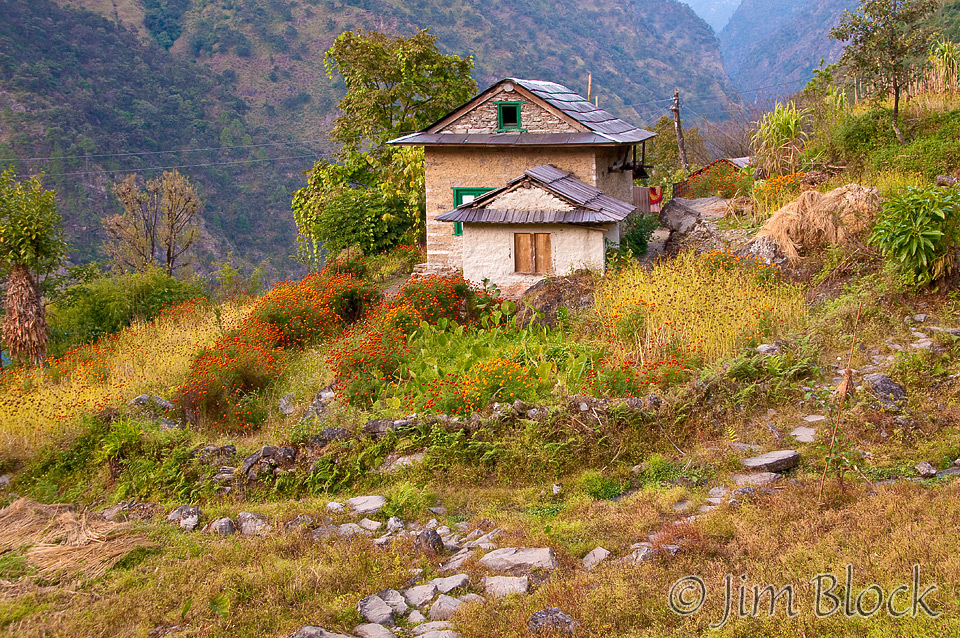
We delivered fleece jackets at two schools and climbed uphill toward the Taksindu Monastery. Chhongba had promised tenting on this trip, but so far it was just lodges and tea houses for the nights. Finally the tents came out on a cliff below the monastery. It was beautiful at 7 AM.
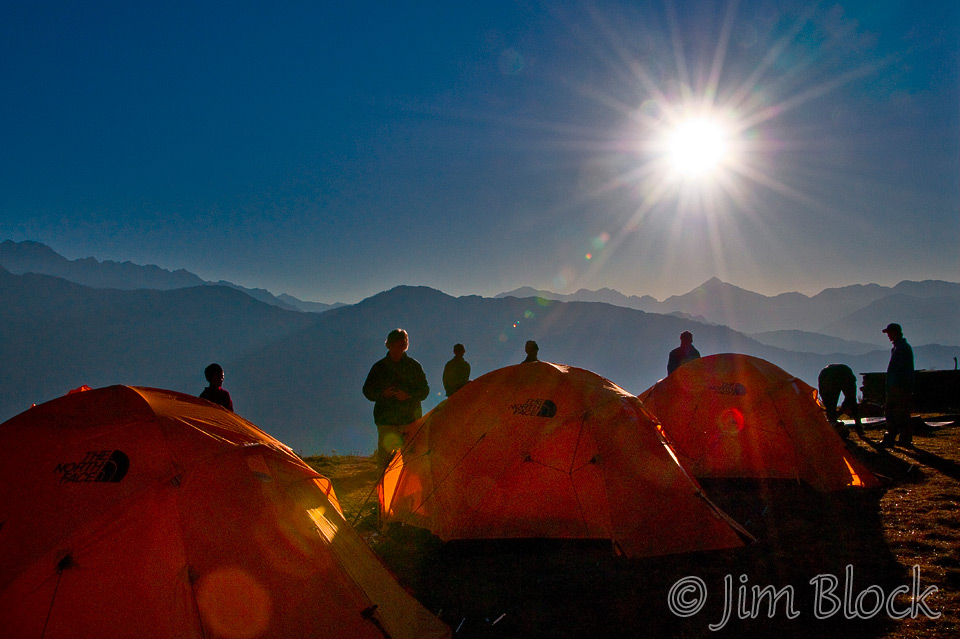
Thirty minutes before the photo above was taken, I made this one. It has always spoken to me. I was very disappointed when I came to the same spot on my fourth visit to Nepal and found a large hotel being built.
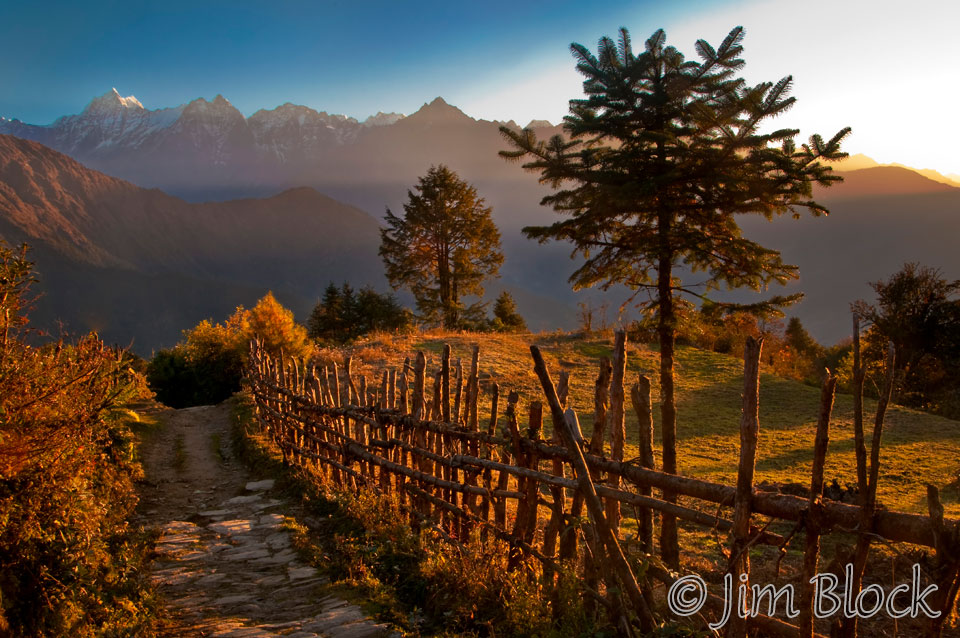
We hiked along a beautiful trail in Salung in the Solu region. We had climbed to a viewpoint above the Taksindu Pass where we could see Mount Everest in the far distance. We would see it again from another spot in Salung. Then we would rest near a porter carrying a 200 pound pack.
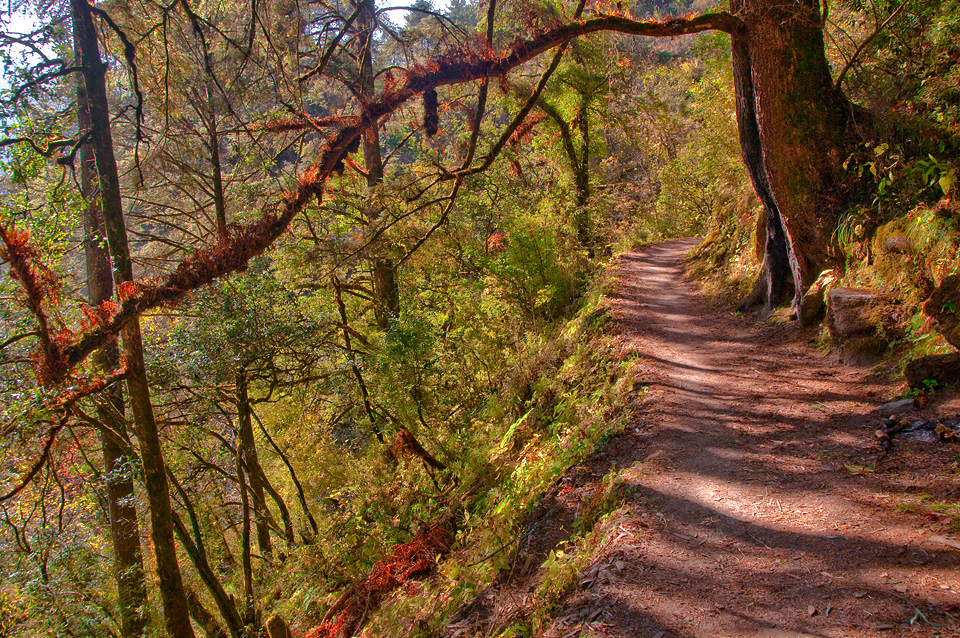
We attended the Mani Rimdu festival at the Chiwang Gompa monastery, spending three nights in tents. Then we hiked down to Phaplu and checked into a hotel for the night. We planned to hike down to the Saturday market at Salleri. I was anxious to get there but waited somewhat impatiently for my three companions to shower and wash their hair — a real luxury when trekking. We finally got to the market shortly before it started closing up.
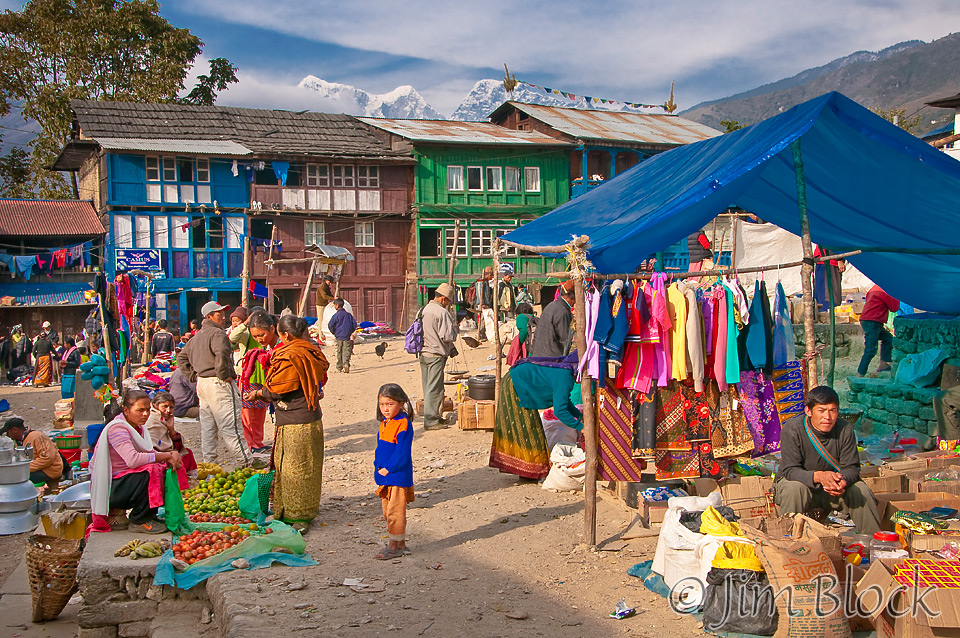
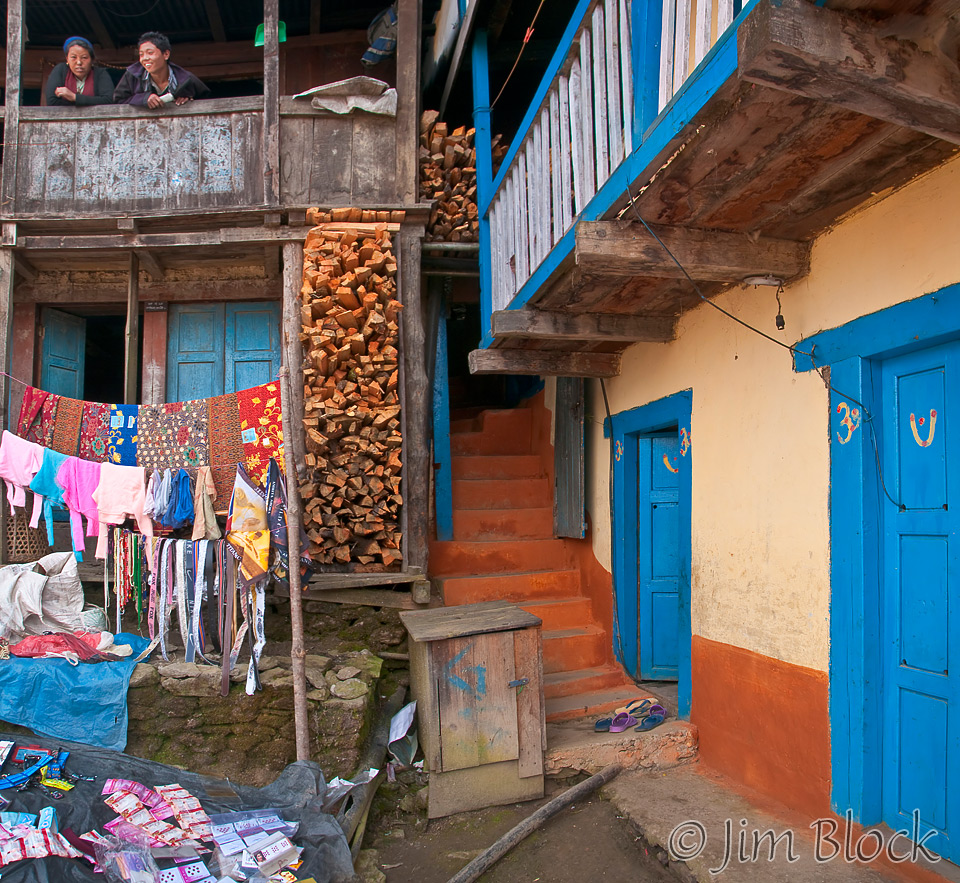
Before heading home from my first trip I had a day and a half to myself to explore Kathmandu. I visited Durbar Square, a long walk, and Thamel, the crowded tourist area. Not far from our hotel I found this father driving his four children to school. In Nepal the motorcycle drivers are required to wear helmets. I guess the passengers are not as important.
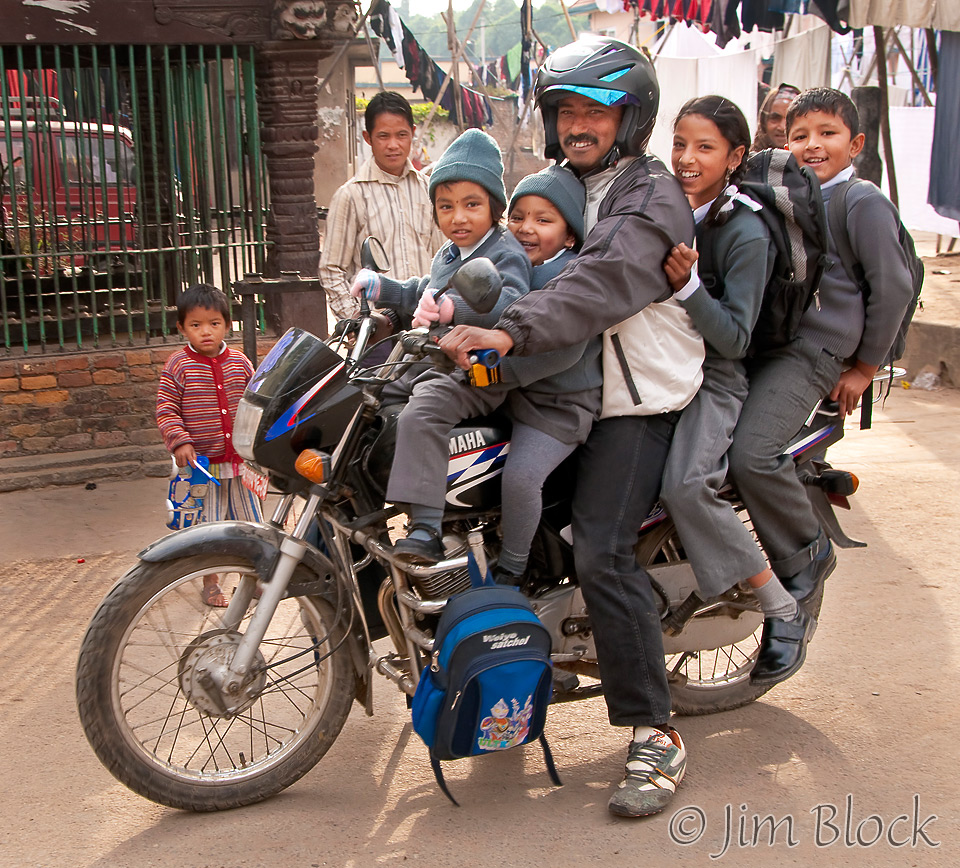
In the Durbar Square area I took these two photos. The woman arranging her vegetables for sale has a great sense of organization.
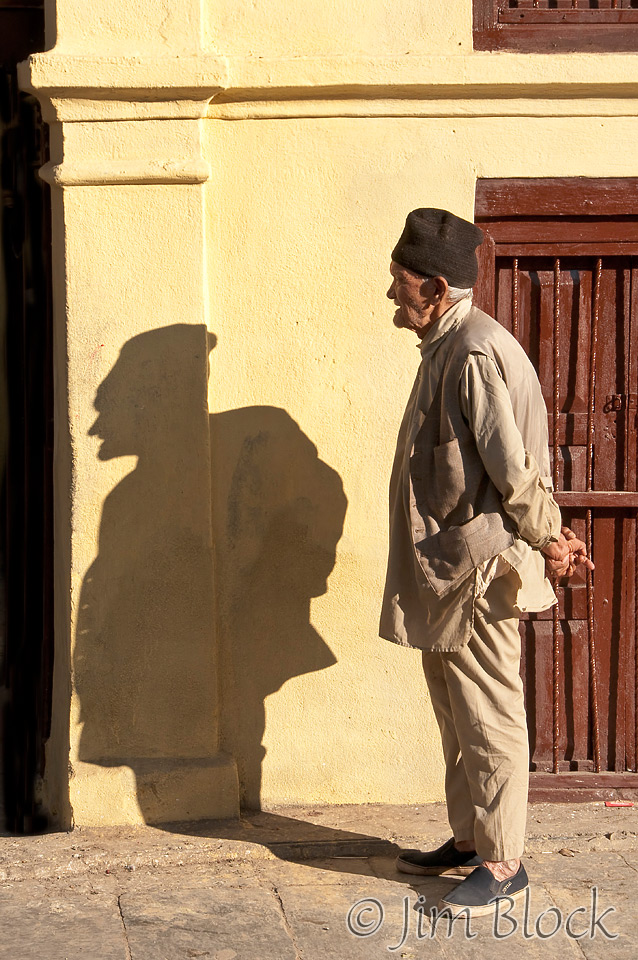
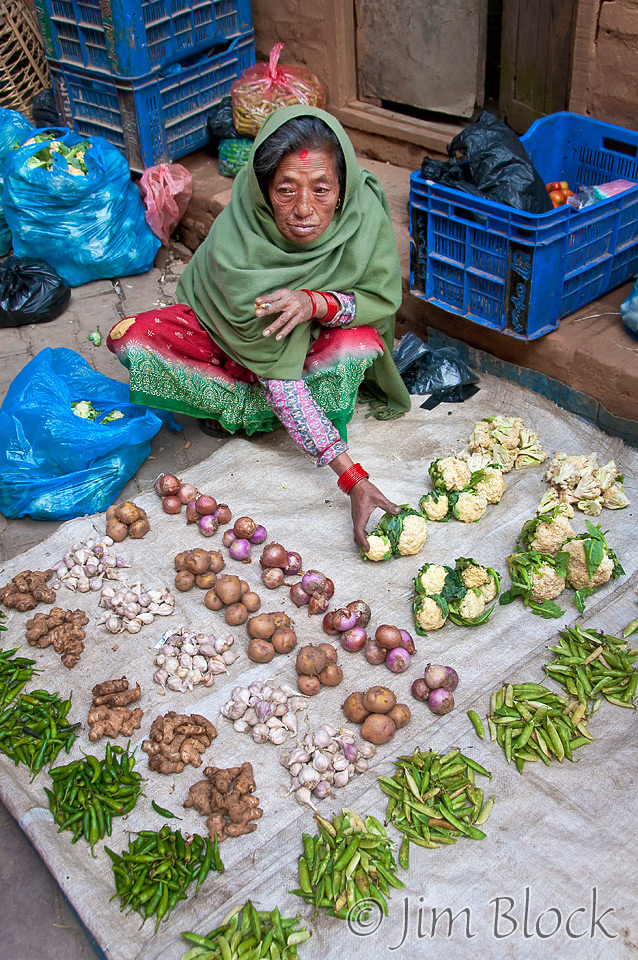
On my second trek in Nepal we stayed in Khumjung at a lodge owned by the brother of one of our sherpas. He was a chef at the very upscale Everest View Hotel far uphill from Khumjung. The lodge was new and did not yet have a name. But it had a great view of Ama Dablam and nearby I was able to photograph Himalayan monals, a spectacular large-sized pheasant that is the national bird of Nepal. The bird is known as danfe in Nepal.
We knew we would return to the “no name lodge” near the end of our trek so we spent considerable time while trekking trying to think up a good name for the lodge. We settled on Danfe Lodge. When we returned we were shocked to find the lodge had a name and even printed menus with the name, the “Namaste Lodge”. Namaste means “greetings to you” and it is heard constantly from the rickshaw drivers and shop owners in Thamel looking to snare a customer. It is also the name of perhaps 20% of the hotels and lodges in Nepal.
We convinced the owner that our name was better. When I got home I made up some signs and menu covers for him with the lodge on the left, Ama Dablam in the background, and a danfe on a large boulder.
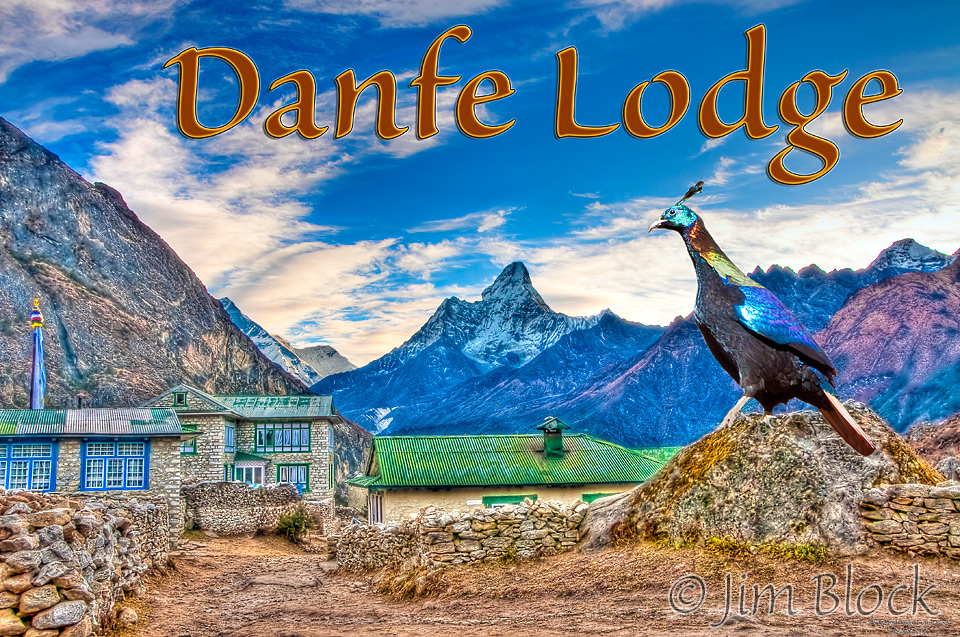
Each morning the shepas would wake us up with “bed tea” consisting of tea (and coffee for some of us) and a hot cloth to wash face and hands. I normally miss this wake up call as I usually have already been outside for an hour of early photography, the best time. When I returned I found a bowl of hot water (a luxury) that the sherpas had used and washed my bandana in it. I hung the bandana on a line outside. Fifteen minutes later I retrieved it. It was frozen solid. I held it sideways for a photo.
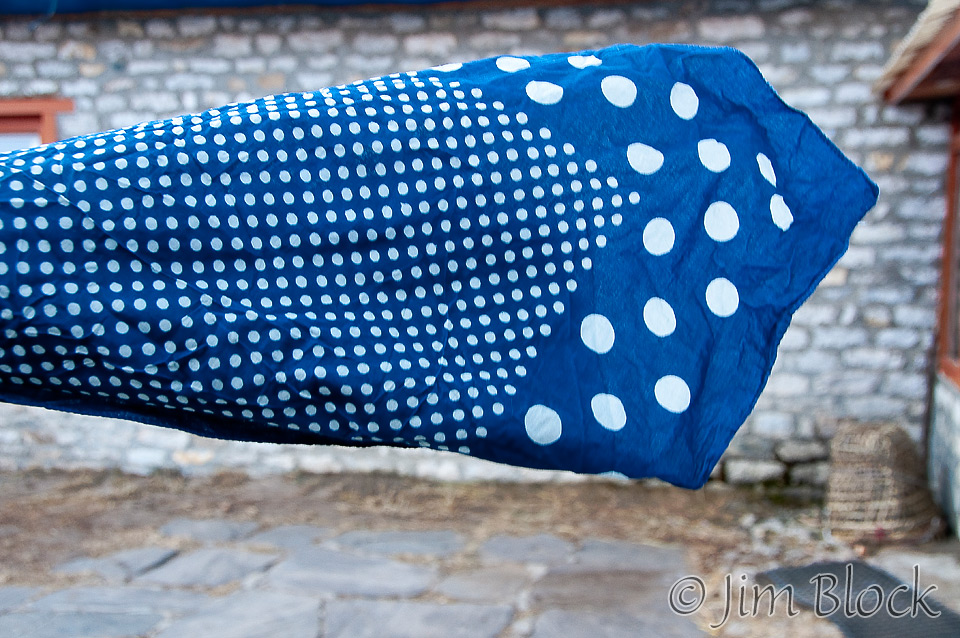
Waiting for our flight to Kathmandu from Lukla after my second trek, I took a somewhat puzzling photo at around 8 AM. The shadow you see on the clouds is clearly from the mountains. But the sun is behind the mountains. How can this be? There is only one obviously correct answer. If you can’t figure it out, you can find the answer at the bottom of this blog: Celestial Lights.
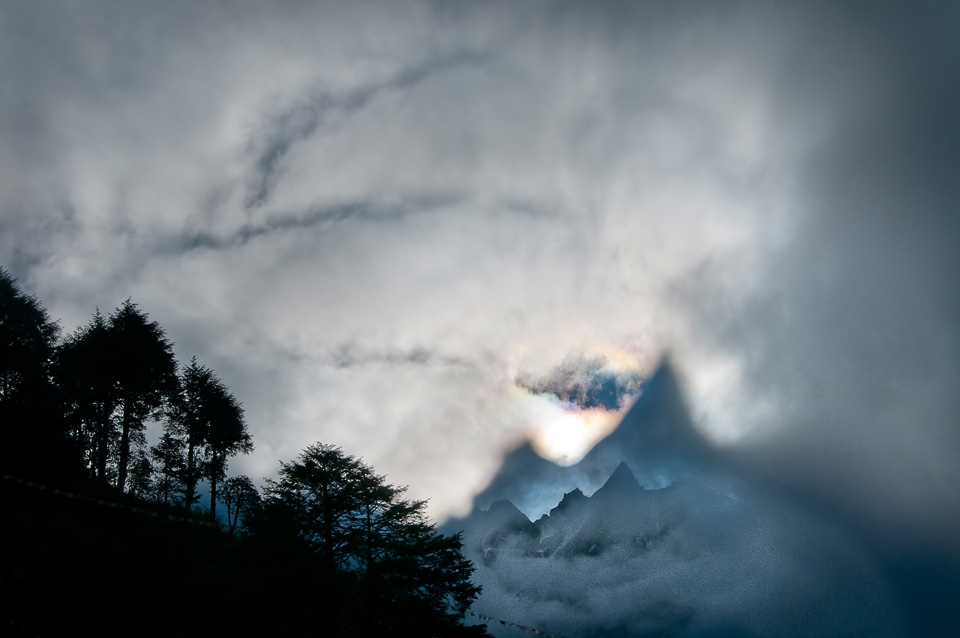
On the first day of our trek around the Annapurna Circuit, we crossed two very “interesting” bridges over the Marsyangdi River in a town called Bhulbhule. I could see the second bridge from the trail before our lunch spot and thought, “look at the crazy bamboo contraption that people have to cross”. Little did I know we had to cross it after lunch. Here are five photos of the two bridges.
We were about half way along our trek around the Annapurna Circuit. I got up early and headed down the very long stairway from our lodge to take some photos before breakfast. I wanted to walk at least part way back up to Upper Pisang to try to get the morning light on Annapurna II and the Paungi Danda, the Gateway to Heaven. This amazing rock face of Pisang Peak rises dramatically 4,900 ft above the Marshyangdi River. In the photo below, the sun has just reached the top of Paungi Danda. That black S-curve in the snow is a cliff perhaps several hundred feet high.
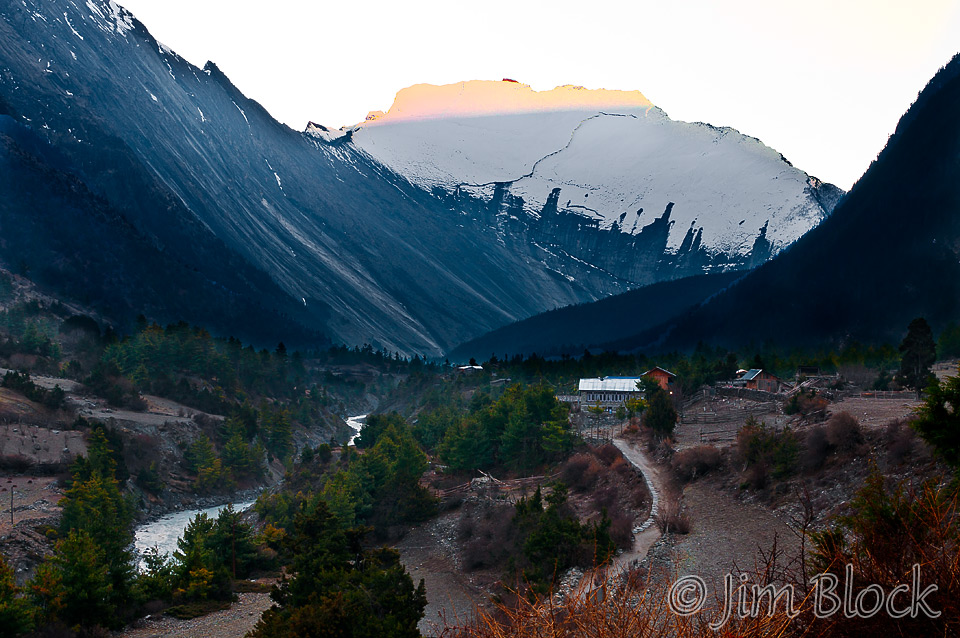
The high point of our trek around Annapurna was certainly crossing the Thorong La (pass). We began our long uphill slog a little before 4:00 AM. Our headlamps guided us in the dark. Daylight eventually arrived. Below are two photos, the first just before 6 AM when the sun was not yet on us, and the second just after 7 AM. We climbed higher and higher with one false cul (pass) after another until we finally reached the real pass and started our long descent past Mustang to Muktinath.
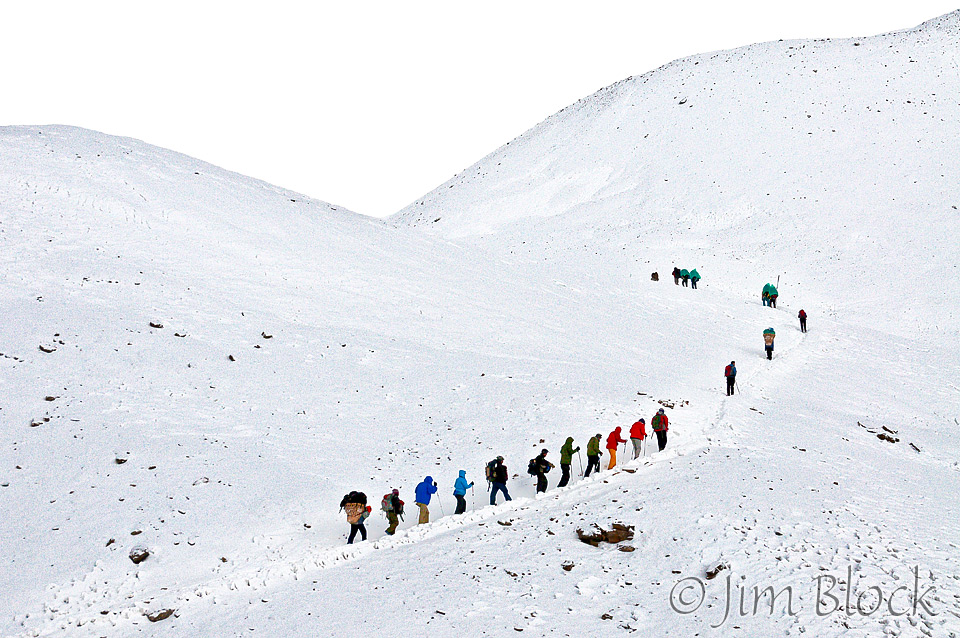
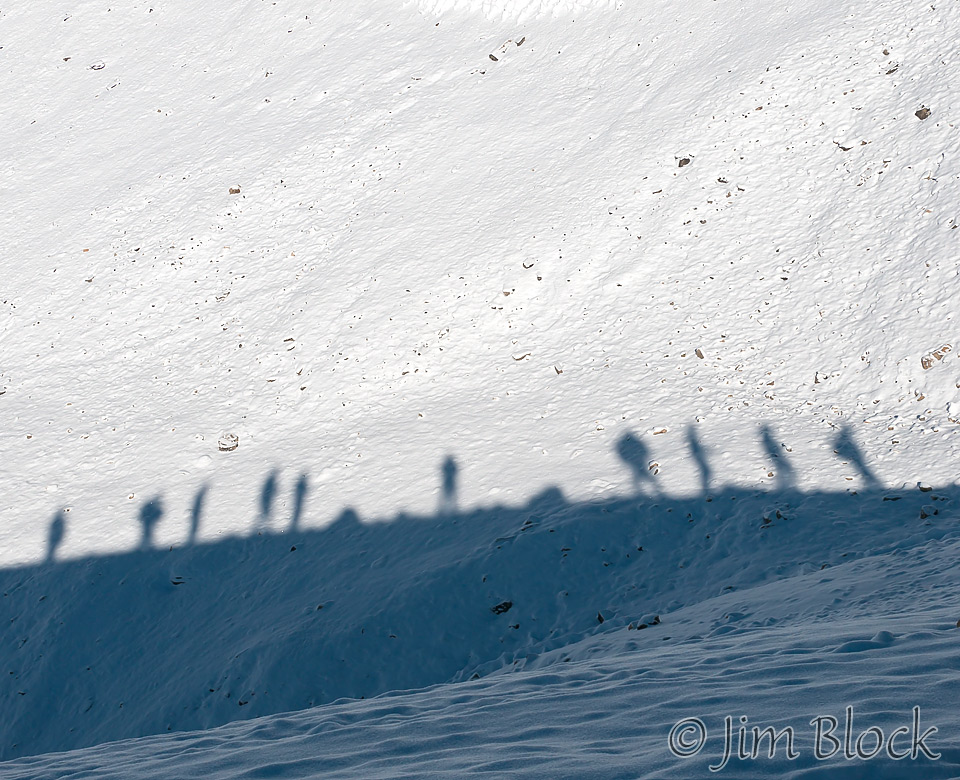
At the conclusion of our trek around the Annapurna Circuit, we hiked from Jomson down to the charming apple-growing village of Marpha for lunch. After lunch we walked to a Buddhist Monastery. From the stairs up to the monastery I took this photo of the roofs of houses. You can see much firewood and three types of solar energy.
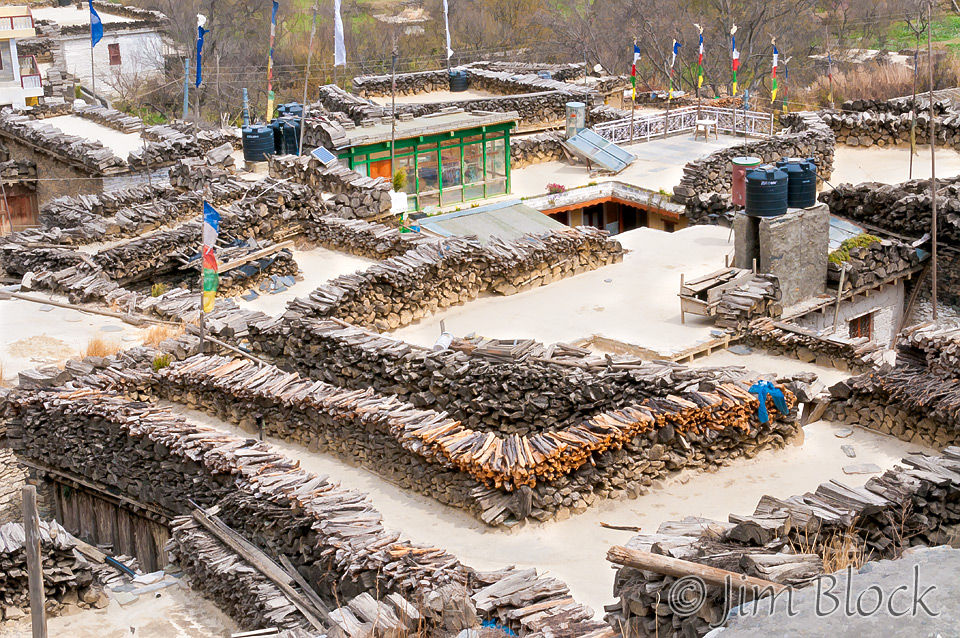
The next day we had an amazing flight from Jomson to Pokhara. You might want to try to guess how long it took our plane after landing in Jomsom to get airborne again? How much time from touchdown for the plane to taxi to the gate, unload 18 passengers, unload 18 passengers worth of luggage, load 18 passengers and all their luggage, hand out cotton for the ears and candy for the mouth, make a “safety” announcement in several languages, taxi, and get airborne again? I measured the time with the “time stamps” in the metadata of my photos. After you guess you can read the caption below. But take a guess first.
During our flight we didn’t gain all that much altitude. I was sitting up front and through the cockpit door watched the terrain alert flash the entire trip, warning of an imminent crash. The sun rising behind the Annapurna mountains above us was spectacular.
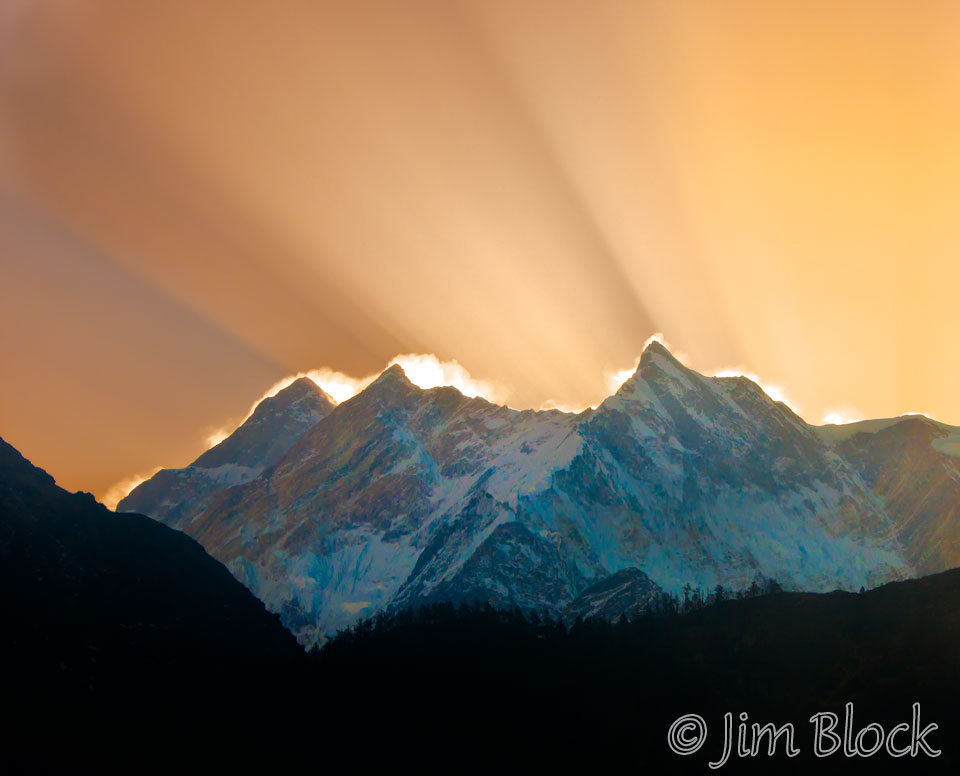
On my fourth trek in Nepal we again visited Khari Gompa, a Tibetan Buddhist nunnery in Thamo near Mount Everest. The moon was full, which is a special time for Buddhists. Below are two photos from this visit.
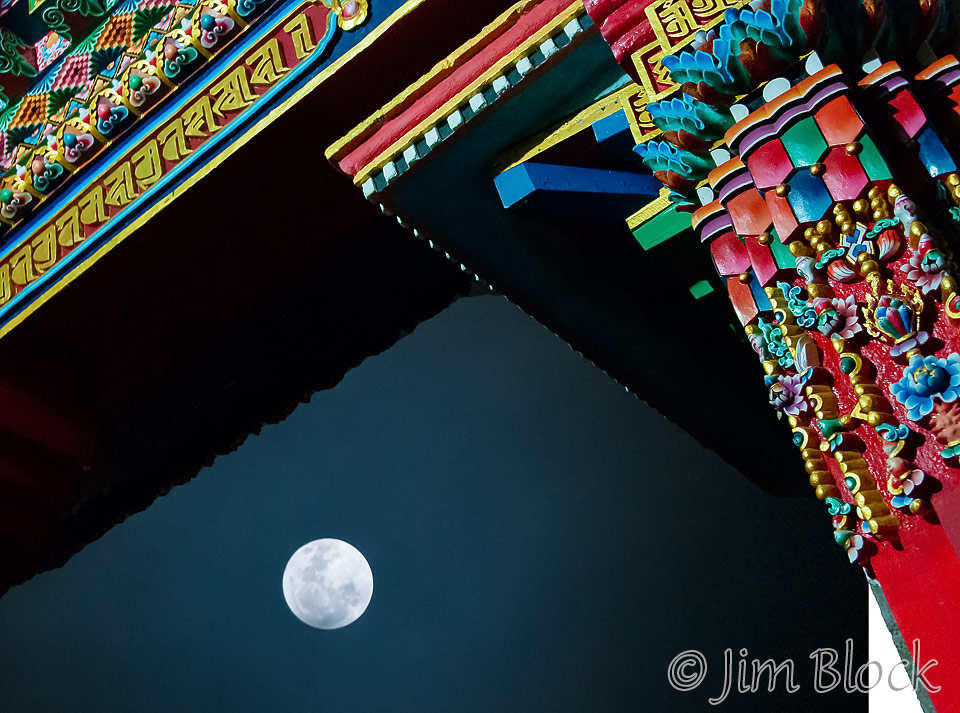
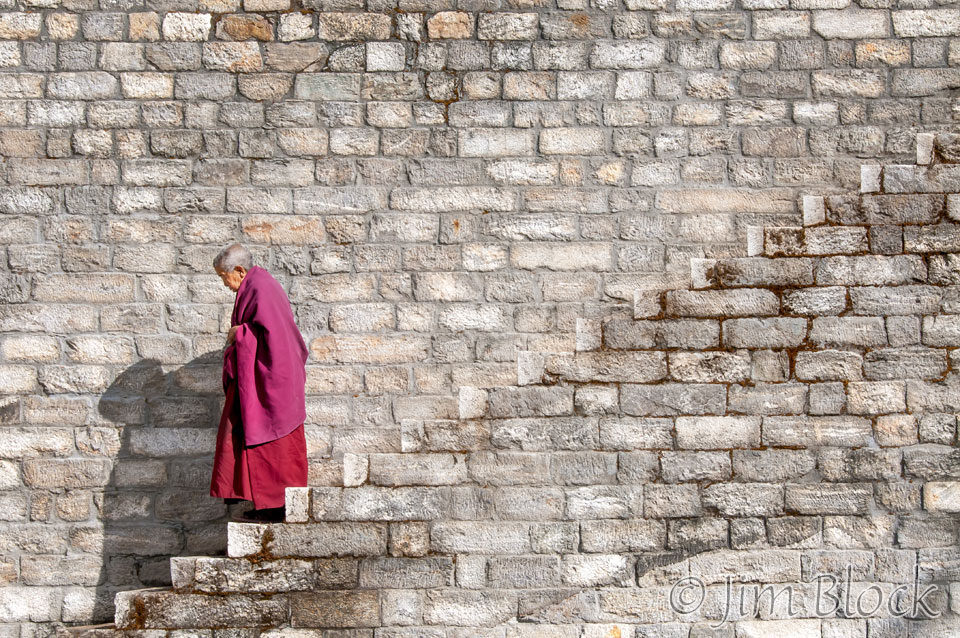
Near the end of my fourth trek in Nepal, we hiked from Khumjung to Namche Bazaar. For almost two hours we saw amazing clouds caused by the high winds over Thamserku. For a time they were iridescent with beautiful colors. Iridescent clouds are a diffraction phenomenon caused by small water droplets or small ice crystals individually scattering light.
